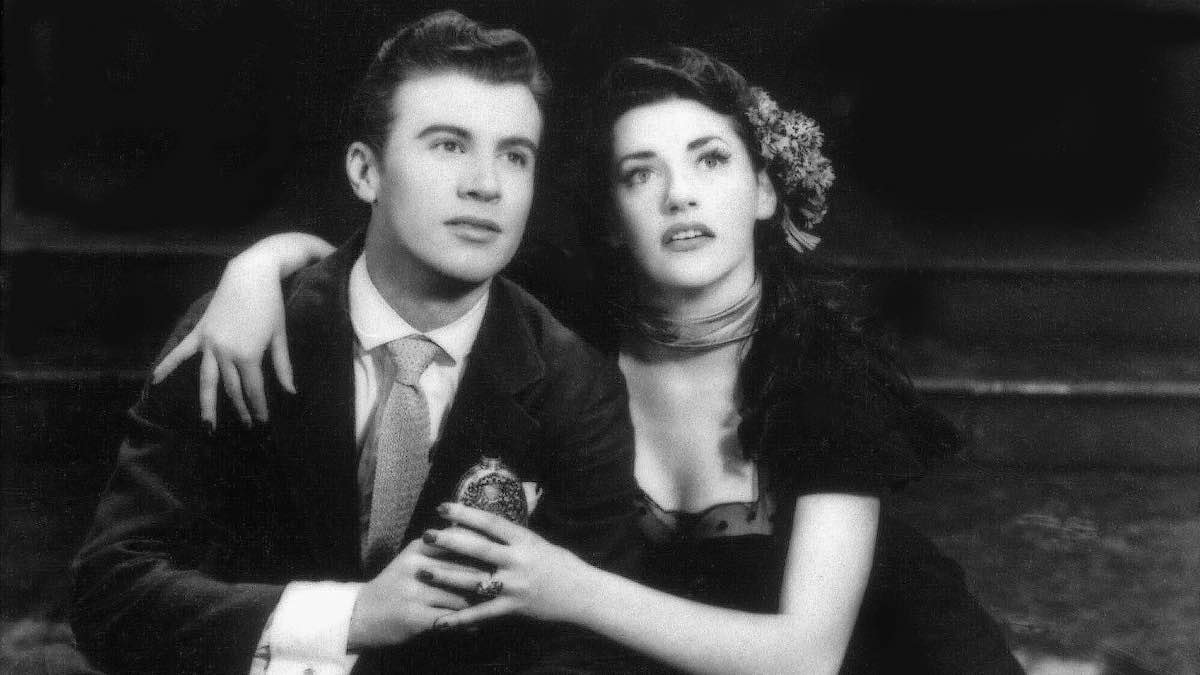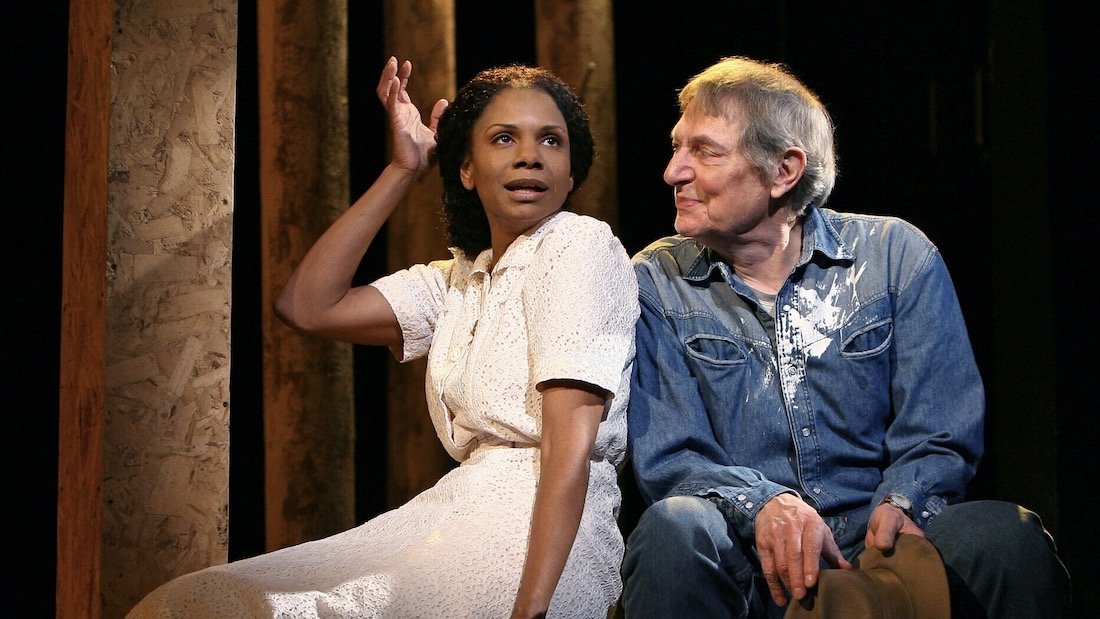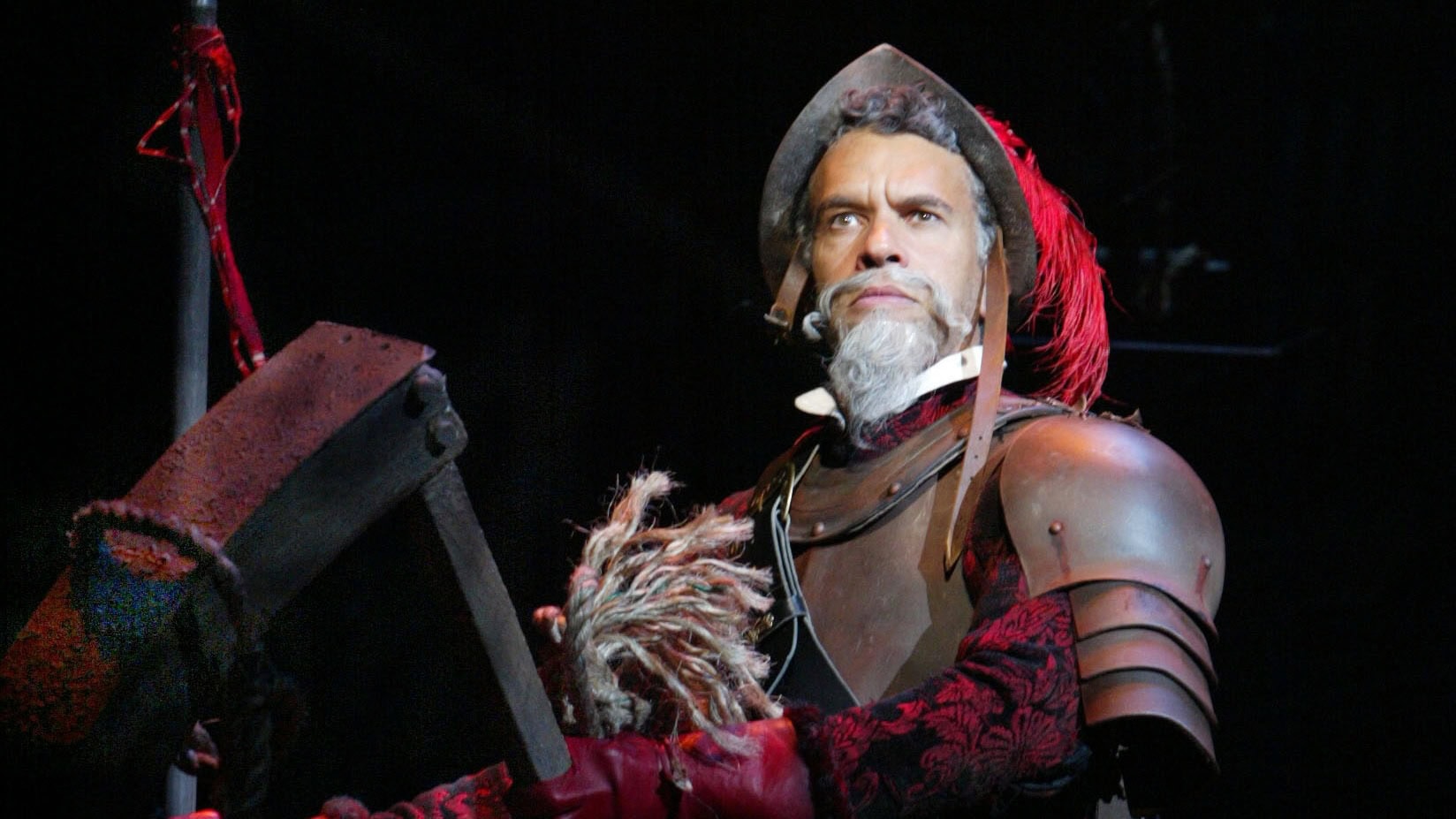
In this comprehensive essay, reprinted from the liner notes for the 2009 studio cast recording of Rodgers & Hammerstein’s Allegro (US/UK), theatre historian Bert Fink recounts the birth of the landmark “concept musical,” an experimental Rodgers & Hammerstein work that broke new ground on Broadway.
…
They had triumphed their first time out with, Oklahoma! (US/UK) in 1943. Two years later they exceeded expectations with Carousel (US/UK) and, in that same year, charmed Hollywood, winning an Academy Award® for State Fair (US/UK). They had also begun producing: first, John van Druten’s play I Remember Mama (US/UK), then Irving Berlin’s blockbuster Annie Get Your Gun (US/UK) and a tour of Show Boat (US/UK). By now they were practically deified for making hits by taking chances, and in 1947 composer Richard Rodgers and lyricist/librettist Oscar Hammerstein II were as eager as everyone else to see what they would come up with next.
The result was Allegro.
Preceded by a mammoth publicity fanfare and the largest advance sale in Broadway history, Allegro (US/UK) opened at the Majestic Theatre in New York on October 10, 1947. Drawing a critical reaction unlike any other in the Rodgers & Hammerstein canon, before or since, Allegro proved controversial.
“A work of great beauty and purity,” declared Brooks Atkinson in the New York Times, with “the lyric rapture of a musical masterpiece.” Louis Kronenberger in PM called it “a very grave disappointment, an out-right failure.” To Robert Coleman in the Daily Mirror, Allegro seemed “perfect and great.” To George Jean Nathan in the New York Journal-American it was “as pretentious as artificial jewelry and just about as valuable.”
Within the context of this critical debate, the show itself remains a fascinating study, as contradictory as the reactions to it. Plot and theme may have seemed naive to some, but the score, structure and staging were indisputably ahead of their time.
Hammerstein had brought the idea of Allegro to Rodgers, and it was the first of only two musicals by the team not adapted from another source (the other being Me and Juliet in 1953). Hammerstein had conceived it as an Everyman allegory, making his protagonist a doctor. Allegro tackled very real concerns about the medical profession: dilemmas that doctors face when a patient’s needs conflict with a hospital’s agenda, the role of big business in medicine, and a doctor’s responsibility to his own community. Rodgers, whose brother and father both practiced medicine, shared his partner’s interest in these issues.
As Allegro began to take shape, its narrative arc of cradle-to-grave was truncated to cradle-to-midlife crisis. This was a lot of ground to cover, plot-wise, and it became clear that a new approach in script and style would be required to carry it all. The musical needed to move effortlessly through time and place, unfolding in an atmosphere of total theatrical freedom. Both authors acknowledged that Allegro was inspired by Thornton Wilder’s classic Our Town (US/UK), which had first appeared nine years earlier. The Wilder play had liberated commercial theater from many of its conventions and shared with Allegro a common setting (small town America in a simpler time), the use of structural and narrative devices and, in production, a minimalist approach to staging and design.
Allegro ‘s score is filled with innovation, starting from its delicate weaving of song and dialogue. Fragments of song move in and out of the action like passing thoughts; melodies flit by in one scene only to take hold and blossom in the next. Big numbers like “So Far” and “The Gentleman Is a Dope” are given to supporting characters, while leads like the Everyman hero have comparatively little solo work. In a high school dance sequence set in the ‘20s, Rodgers wanted a piece of music that would evoke the popular hits of that era, so he quoted one of his own: “Mountain Greenery,” written with Lorenz Hart in 1926.
The result was a musical unlike anything that had come before, and it demanded staging equally bold and original. Its fluid blend of score, dance and book, for instance, required the director and choreographer to think and work as one… In fact, the director and choreographer would have to be one. So, Rodgers & Hammerstein asked the innovative creator of their ballets for Oklahoma! and Carousel, Agnes de Mille, to do double-duty here. The position of director-choreographer was unprecedented; offering it to a woman was extraordinary. Agnes de Mille said yes.
Conceptually, Allegro was a simple show. But simplicity in the theater can be awfully complicated. Jo Mielziner’s sets and lighting achieved an illusion of effortless motion through a complex system of treadmills, moving platforms, screens and projections, supporting a highly sophisticated lighting plot (the first time lighting served as the principal staging factor in a Broadway musical). This necessitated a weekly payroll for 40 stagehands, 18 principal actors, 21 supporting players, 22 dancers, 38 singers and 35 musicians. Allegro was not only expansive, but expensive.
Rodgers & Hammerstein’s fourth collaboration opened at the Shubert Theatre in New Haven on September 1, 1947 and travel
ed from there to Boston before opening in New York, where expectations were extremely high. Following Oklahoma!, Carousel and State Fair was daunting; landing on the covers of Life, Time and other publications didn’t make it any easier. Avid theater-goers snapped up tickets to Allegro in record-setting numbers, resulting in the largest advance sale in history: $750,000 on a $4.50 top ticket price, at a time when a $100,000 advance was considered astronomical.
The advance sale helped for a while, as did the good and great reviews (of which, contrary to later common assumption, there were quite a few). But the bad reviews hurt and, more importantly, so did word-of-mouth. By July of 1948, less than 10 months after it arrived, Allegro was gone. The show failed to pay back its original production costs, and a national tour that visited 16 cities from November ‘48 to June ‘49 didn’t fare much better.
Why? The simplest explanation is that, as the old theater adage goes, the audience is never wrong. “The fault was ours,” conceded Rodgers in his autobiography, Musical Stages, “for not stating our point of view more clearly.” Hammerstein stood by his theme but acknowledged, “If the writer’s aim is misread, it can only be because he hasn’t written clearly enough.”
To many, though, Allegro came across as a “success corrupts” morality play in which the wholesome virtues of America’s heartland were set against graft and greed in the Big Bad City. “We, of course, intended no such conclusion to be drawn from our play,” said Hammerstein, but reactions such as Irwin Shaw’s of the New Republic were typical: “All I can conclude is that Rodgers and Hammerstein bitterly regret being the richest and most successful people in American theater… They have sacrificed themselves in a cause they don’t believe in.”
The fact remains, however, that the bold artistic chances taken in Allegro did eventually pay off: maybe not for the show itself and not even for Rodgers & Hammerstein, but certainly for the American musical. While Oklahoma! and Carousel changed the course of the musical overall, Allegro no less importantly signaled the start of a new powerful genre within: the concept musical. Reverberations of Allegro have resounded over the years, from seamless staging that breaks time and space (Dreamgirls, Evita) to the introspective use of dance (West Side Story, Contact) and chorus (A Little Night Music, Ragtime), from the thematic (Company) to the metaphoric (A Chorus Line). Allegro was, in the words of the original production’s gofer, Stephen Sondheim, “the first really good experimental show.”
Allegro has enjoyed a few revivals over the years, as well as concert stagings in London, Toronto and as part of the inaugural season of New York City Center’s acclaimed Encores! series in 1994. But the effects of Allegro’s achievements were not to be seen in the authors’ lifetimes at least, and they were left to ponder over what was, by any standard definition, their first failure. It would haunt them both for the rest of their lives.
“I’m going back to the Allegro idea,” Hammerstein told The New Yorker in 1951. “It’s still churning inside me.” He was working on a television version of it when he died in the summer of 1960. Rodgers, 30 years after Allegro opened on Broadway, wrote in his autobiography: “Of all the musicals I ever worked on that didn’t quite succeed, Allegro is the one I think most worthy of a second chance. From time to time, various ideas for revising Allegro have been proposed, and though none so far has seemed feasible, I still keep hoping.”
…
To license a production of Rodgers & Hammerstein’s Allegro, visit Concord Theatricals in the US or UK.
Header Image: 1947 Broadway production of Rodgers & Hammerstein’s Allegro.

Plays that Inspired Musicals

QUIZ: Which Character from The Lightning Thief Are You?

